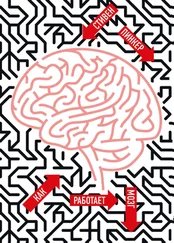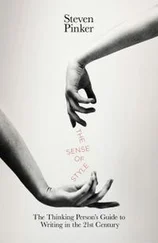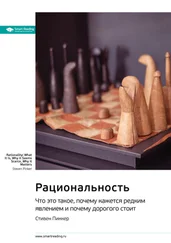Courtois, S., Werth, N., Panné, J.-L., Paczkowski, A., Bartoek, K., & Margolin, J.-L. 1999. The black book of communism: Crimes, terror, repression. Cambridge, Mass.: Harvard University Press.
Cowen, T. 1998. In praise of commercial culture. Cambridge, Mass.: Harvard University Press.
Cowie, F. 1999. What's within? Nativism reconsidered. New York: Oxford University Press.
Crair, M. C., Gillespie, D. C., & Stryker, M. P. 1998. The role of visual experience in the development of columns in cat visual cortex. Science, 279, 566–570.
Cramer, K. S., & Sur, M. 1995. Activity-dependent remodeling of connections in the mammalian visual system. Current Opinion in Neurobiology, 5, 106–111.
Crawford, C., & Krebs, D. L. (Eds.) 1998. Handbook of evolutionary psychology: Ideas, issues, and applications. Mahwah, N. J.: Erlbaum.
Crevier, D. 1993. AI: The tumultuous history of the search for artificial intelligence. New York: Basic Books.
Crews, F. 2001. Saving us from Darwin. New York Review of Books.
Crick, F. 1994. The astonishing hypothesis: The scientific search for the soul. New York: Simon & Schuster.
Crick, F., & Koch, C. 1995. Are we aware of neural activity in primary visual cortex? Nature, 375, 121–123.
Crittenden, D. 1999. What our mothers didn't tell us: Why happiness eludes the modern woman. New York: Simon & Schuster.
Cronin, H. 1992. The ant and the peacock. New York: Cambridge University Press. Cronk, L. 1999. That complex whole: Culture and the evolution of human behavior. Boulder, Colo.: Westview Press.
Cronk, L., Chagnon, N., & Irons, W. (Eds.) 2000. Adaptation and human behavior. Hawthorne, N. Y.: Aldine de Gruyter.
Crow, J. F. 2002. Unequal by nature: A geneticist's perspective on human differences. Daedalus, Winter, 81–88.
Crowley, J. C., & Katz, L. C. 2000. Early development of ocular dominance columns. Science, 290, 1321–1324.
Cummins, D. D. 1996. Evidence for the innateness of deontic reasoning. Mind and Language, 11, 160–190.
Curti, M. 1980. Human nature in American thought: A history. Madison: University of Wisconsin Press.
Curtiss, S., de Bode, S., & Shields, S. 2000. Language after hemispherectomy. In J. Gilkerson, M. Becker, & N. Hyams (Eds.), UCLA Working Papers in Linguistics (Vol. 5, pp. 91–112). Los Angeles: UCLA Department of Linguistics.
Dabbs, J. M., & G., D. M. 2000. Heroes, rogues, and lovers: Testosterone and behavior. New York: McGraw Hill.
Daly, M. 1991. Natural selection doesn't have goals, but it's the reason organisms do (commentary on P. J. H. Shoemaker, "The quest for optimality: A positive heuristic of science?"). Behavioral and Brain Sciences, 14, 219–220.
Daly, M., Salmon, C., & Wilson, M. 1997. Kinship: The conceptual hole in psychological studies of social cognition and close relationships. In J. Simpson & D. Kenrick (Eds.), Evolutionary social psychology. Mahwah, N. J.: Erlbaum.
Daly, M., & Wilson, M. 1983. Sex, evolution, and behavior 2nd ed. Belmont, Calif.: Wadsworth.
Daly, M., & Wilson, M. 1988. Homicide. Hawthorne, N. Y.: Aldine de Gruyter.
Daly, M., & Wilson, M. 1994. Evolutionary psychology of male violence. In J. Archer (Ed.), Male violence. London: Routledge.
Daly, M., & Wilson, M. 1999. The truth about Cinderella: A Darwinian view of parental love. New Haven: Yale University Press.
Daly, M., Wilson, M., & Vasdev, S. 2001. Income inequality and homicide rates in Canada and the United States. Canadian Journal of Criminology, 43, 219–236.
Damasio, A. R. 1994. Descartes' error: Emotion, reason, and the human brain. New York: Putnam.
Damasio, H. 2000. The lesion method in cognitive neuroscience. In F. Boller & J. Grafman (Eds.), Handbook of neuropsychology (2nd ed., Vol. 1,).
Damewood, M. D. 2001. Ethical implications of a new application of preimplantation diagnosis. Journal of the American Medical Association, 285, 3143–3144.
Darwin, C. 1872/1998. The expression of the emotions in man and animals: Definitive edition. New York: Oxford University Press.
Davidson, R. J., Putnam, K. M., & Larson, C. L. 2000. Dysfunction in the neural circuitry of emotion regulation-A possible prelude to violence. Science, 289, 591–594.
Davis, B. D. 1983. Neo-Lysenkoism, IQ, and the press. Public Interest, 73, 41–59. Dawkins, R. 1976/1989. The selfish gene new ed. New York: Oxford University Press.
Dawkins, R. 1983. Universal Darwinism. In D. S. Bendall (Ed.), Evolution from molecules to man. New York: Cambridge University Press.
Dawkins, R. 1985. Sociobiology: The debate continues (Review of Lewontin, Rose, & Kamin's "Not in our genes"). New Scientist, 24, 59–60.
Dawkins, R. 1986. The blind watchmaker: Why the evidence of evolution reveals a universe without design. New York: Norton.
Dawkins, R. 1998. Unweaving the rainbow: Science, delusion and the appetite for wonder. Boston: Houghton Mifflin.
De Waal, F. 1998. Chimpanzee politics: Power and sex among the apes. Baltimore: Johns Hopkins University Press.
Deacon, T. 1997. The symbolic species: The coevolution of language and the brain. New York: Norton.
Deary, J. J. 2000. Looking down on human intelligence: From psychometrics to the brain. New York: Oxford University Press.
Deater-Deckard, K., & Plomin, R. 1999. An adoption study of the etiology of teacher and parent reports of externalising behavior problems in middle childhood. Child Development, 70, 144–154.
Degler, C. N. 1991. In search of human nature: The decline and revival of Darwinism in American social thought. New York: Oxford University Press.
Dehaene, S. 1997. The number sense: How the mind creates mathematics. New York: Oxford University Press.
Dehaene, S., Spelke, L., Pinel, P., Stanescu, R., & Tsivkin, S. 1999. Sources of mathematical thinking: behavioral and brain-imaging evidence. Science, 284, 970–974.
Denfeld, R. 1995. The new Victorians: A young woman's challenge to the old feminist order. New York: Warner Books.
Dennett, D. C. 1984. Elbow room: The varieties of free will worth wanting. Cambridge, Mass.: MIT Press.
Dennett, D. C. 1986. The logical geography of computational approaches: A view from the East Pole. In M. Harnish & M. Brand (Eds.), The representation of knowledge and belief. Tucson: University of Arizona Press.
Dennett, D. C. 1991. Consciousness explained. Boston: Little, Brown.
Dennett, D. C. 1995. Darwin's dangerous idea: Evolution and the meanings of life. New York: Simon & Schuster.
Dershowitz, A. M. 1994. The abuse excuse. Boston: Little, Brown. Descartes, R. 1637/2001. Discourse on method. New York: Bartleby.com. Descartes, R. 1641/1967. Meditations on first philosophy. In R. Popkin (Ed.), The philosophy of the 16th and 17th centuries. New York: Free Press.
Deutsch, M., & Gerard, G. B. 1955. A study of normative and informational social influence upon individual judgment. Journal of Abnormal and Social Psychology, 51, 629–636.
Devlin, K. 2000. The Math Gene: How mathematical thinking evolved and why numbers are like gossip. New York: Basic Books.
Diamond, J. 1992. The third chimpanzee: The evolution and future of the human animal. New York: HarperCollins.
Diamond, J. 1998. Why is sex fun? The evolution of human sexuality. New York: Basic Books.
Diamond, J. M. 1997. Guns, germs, and steel: The fates of human societies 1st ed. New York: Norton.
Diamond, M., & Sigmundson, K. 1997. Sex reassignment at birth: Long-term review and clinical implications. Archives of Pediatric and Adolescent Medicine, 151, 298–304.
Dickinson, E. 1976. The complete poems of Emily Dickinson. New York: Little, Brown & Co.
Dissanayake, E. 1992. Homo aestheticus: Where art comes from and why. New York: Free Press.
Dissanayake, E. 1998. Komar and Melamid discover Pleistocene taste. Philosophy and Literature, 22, 486–496.
Читать дальше
Конец ознакомительного отрывка
Купить книгу











